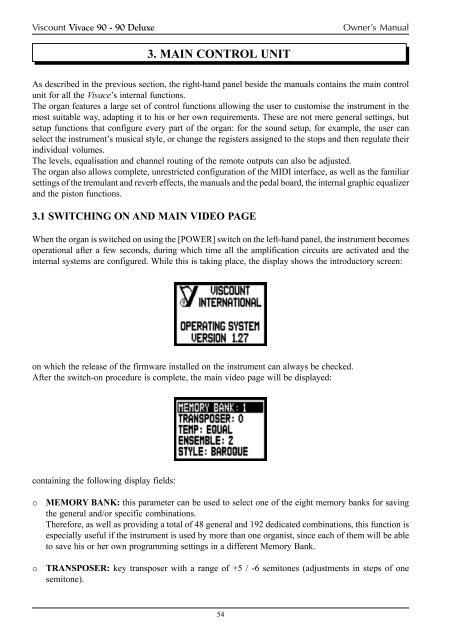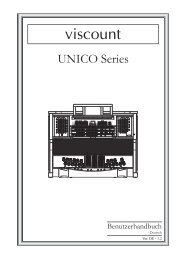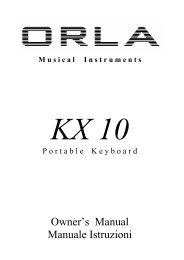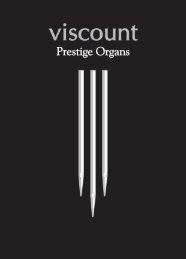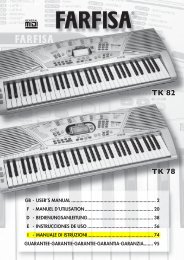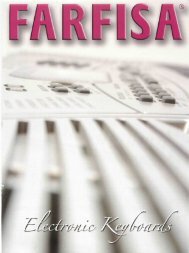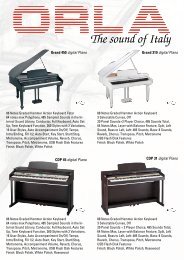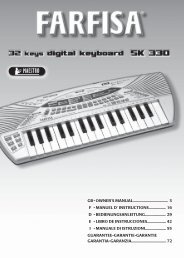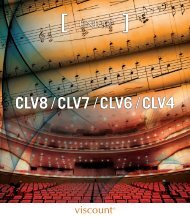You also want an ePaper? Increase the reach of your titles
YUMPU automatically turns print PDFs into web optimized ePapers that Google loves.
<strong>Viscount</strong> Vivace 90 - 90 Deluxe<br />
Owner’s Manual<br />
3. MAIN CONTROL UNIT<br />
As described in the previous section, the right-hand panel beside the manuals contains the main control<br />
unit for all the Vivace’s internal functions.<br />
The organ features a large set of control functions allowing the user to customise the instrument in the<br />
most suitable way, adapting it to his or her own requirements. These are not mere general settings, but<br />
setup functions that configure every part of the organ: for the sound setup, for example, the user can<br />
select the instrument’s musical style, or change the registers assigned to the stops and then regulate their<br />
individual volumes.<br />
The levels, equalisation and channel routing of the remote outputs can also be adjusted.<br />
The organ also allows complete, unrestricted configuration of the MIDI interface, as well as the familiar<br />
settings of the tremulant and reverb effects, the manuals and the pedal board, the internal graphic equalizer<br />
and the piston functions.<br />
3.1 SWITCHING ON AND MAIN VIDEO PAGE<br />
When the organ is switched on using the [POWER] switch on the left-hand panel, the instrument becomes<br />
operational after a few seconds, during which time all the amplification circuits are activated and the<br />
internal systems are configured. While this is taking place, the display shows the introductory screen:<br />
on which the release of the firmware installed on the instrument can always be checked.<br />
After the switch-on procedure is complete, the main video page will be displayed:<br />
containing the following display fields:<br />
o<br />
o<br />
MEMORY BANK: this parameter can be used to select one of the eight memory banks for saving<br />
the general and/or specific combinations.<br />
Therefore, as well as providing a total of 48 general and 192 dedicated combinations, this function is<br />
especially useful if the instrument is used by more than one organist, since each of them will be able<br />
to save his or her own programming settings in a different Memory Bank.<br />
TRANSPOSER: key transposer with a range of +5 / -6 semitones (adjustments in steps of one<br />
semitone).<br />
54


